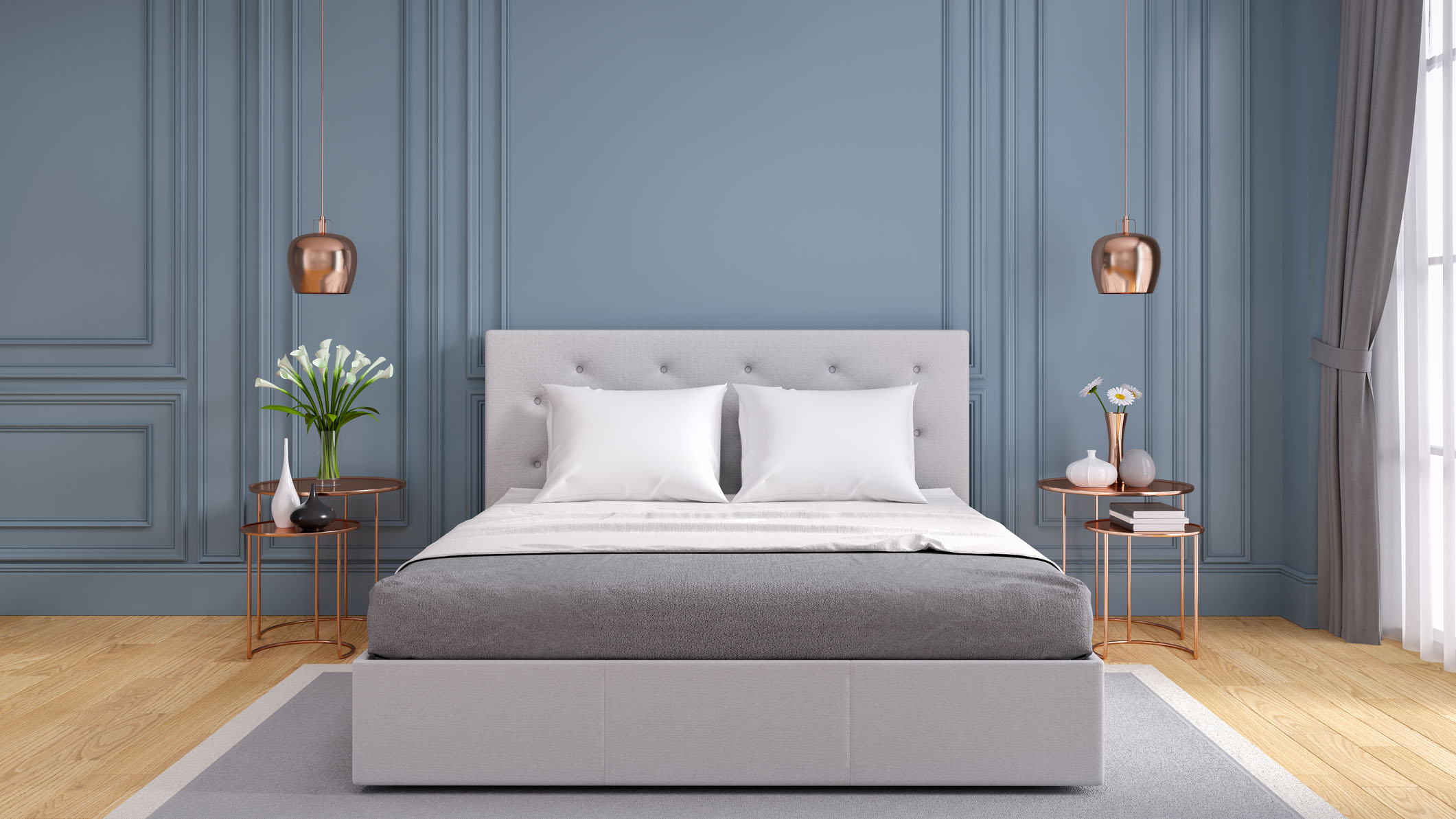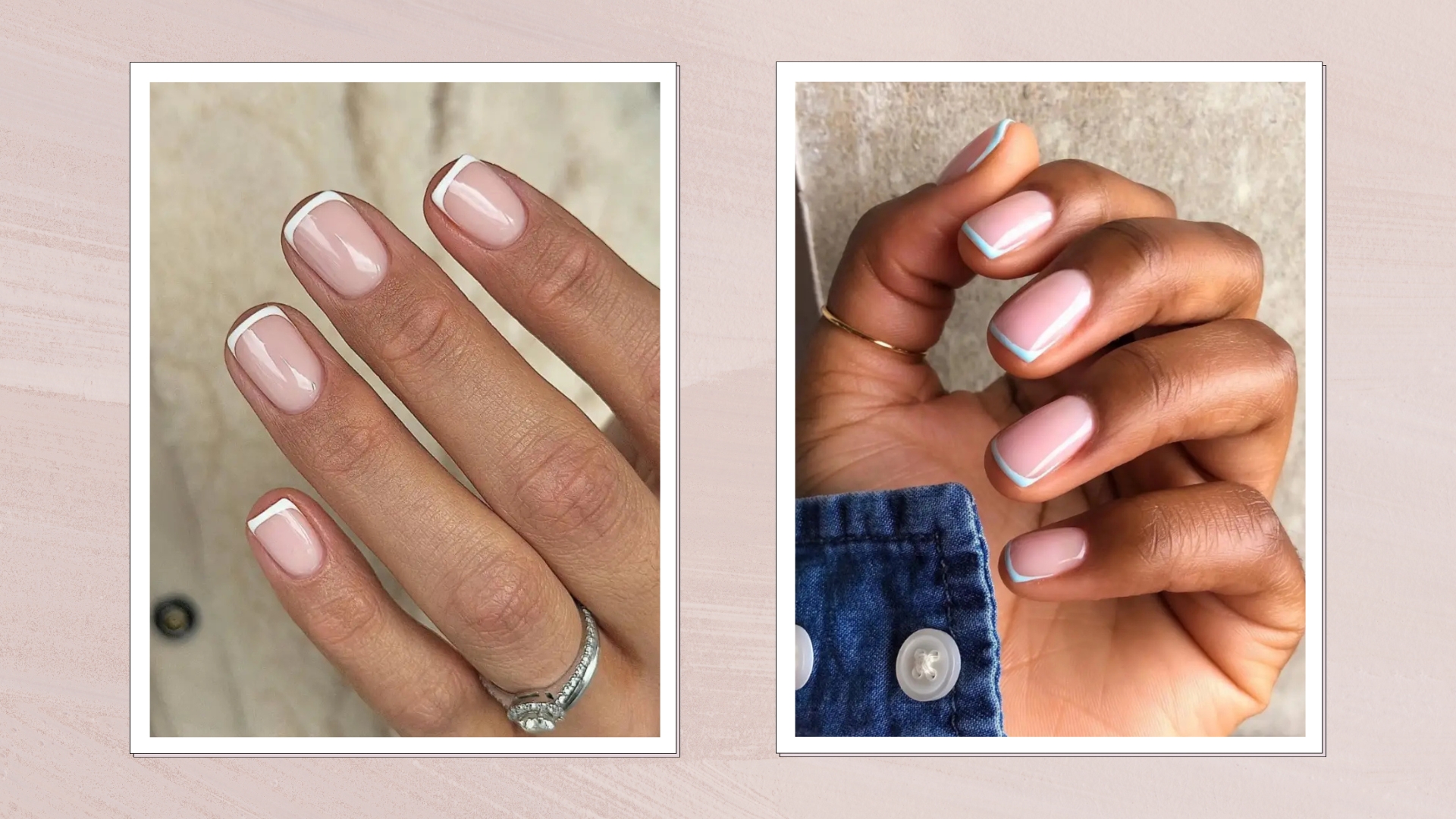What are the different types of pillows and which one should you be using for the best night’s sleep?
There are various different types of pillows—choosing the right one for you depends largely on your sleeping position

There is a huge variety when it comes to the different types of pillows out there, but choosing the right one for you will largely depend on your sleeping position and preferences.
We’re all well aware that using the best pillows our budgets allow for, and the best mattresses we can afford, can help us on the path to a better night’s sleep (or if you want to save on w&h's best mattress pick, the Emma Original Mattress, keep an eye on the Emma mattress sales throughout the year). But the type of pillow you use will also make an enormous difference. And the different types of pillows are often defined by their different fillings.
Andrew Jacobs, the mattress adviser at Otty Sleep, explains, “Pillows fall into two main categories: those with natural fillings and those with man-made fillings. All types have their pros and cons, and all have different appeals, in terms of personal preference, such as or whether you are after a sustainable or vegan pillow.”
He also notes that the ideal pillows for sleep should be ones that support your head and neck properly. He says, “Loft height [shoulder/neck ratio] plays a big part in determining what style/kind of pillow suits best.”
So what sort of pillows are out there, and which one should we be choosing to ensure a better night's sleep?
What are the different types of pillows?
Pillows can vary in many different ways. They can differ in filling and material, but they can also differ in softness/firmness—and some pillows have been specifically created in order to fix a certain problem.
Andrew explains, “Aside from material, most pillows have the same function—the exception being adjustable pillows, which allow one to customize the size and shape to suit. The material inside the pillow will often dictate how long the pillow will last and how it behaves when you sleep on it—for example, whether it is soft or firm, or hot or cool. Shape plays its part in certain situations. For example, some prefer curved pillows for sleeping on a plane or sitting up. But for the most part, the classic rectangular shape covers 95% of pillow design.”
Sign up for the woman&home newsletter
Sign up to our free daily email for the latest royal and entertainment news, interesting opinion, expert advice on styling and beauty trends, and no-nonsense guides to the health and wellness questions you want answered.
The different types of pillows and pillow materials include:
- Memory foam pillows
- Microfiber pillows
- Feather and down pillows
- Latex pillows
- Wool pillows
As well as these pillows, you can also get pillows for specific concerns; there are anti-allergy pillows, anti-snore pillows, pregnancy pillows , and cooling pillows.
A post shared by Mehta Handloom (@mehtahandloom)
A photo posted by on
1. Memory foam pillows
Reasons to buy
Reasons to avoid
Memory foam pillows have become a popular option in recent years due to their support and firm texture. These kind of pillows will mould to your body shape for extra support—but one caveat is that they can often feel very hot due to the fact that they envelop your face and neck.
A post shared by LAZY Sunday (@lazy.sunday.store)
A photo posted by on
2. Microfiber pillows
Reasons to buy
Reasons to avoid
Microfiber is a very fine, synthetic material, typically a polyester/nylon blend. Generally, microfiber pillows are more affordable than other alternatives, but the downside is that they can be less breathable and make you feel warmer. However, some sleepers prefer a microfiber pillow as the synthetic material means it can be good for people with allergies or sensitive skin.
A post shared by The White Company (@thewhitecompany)
A photo posted by on
3. Feather and down pillows
Reasons to buy
Reasons to avoid
Feather and down pillows are often considered the most luxurious—and therefore, are often the most popular choice for hotel pillows. However, this also means that they can be the most expensive pillows. They are generally fairly fluffy and thick, and as such are considered to be great pillows for head and neck support. However, when it comes to washing these pillows, they're a bit more high maintenance and might need professional care. They can sometimes require regular fluffing too, and may not hold their shape without this after a while.
A post shared by Mattress with Vita Talalay (@vita_talalay)
A photo posted by on
4. Latex pillows
Reasons to buy
Reasons to avoid
Perhaps one of the least known types of pillow, latex pillows are similar to memory foam pillows in that they bounce and spring and adjust their shape to touch. But one big plus they have over memory foam is that they don't envelop your head and neck, so can feel a lot cooler and more breathable. Latex pillows can be pricey, but they're a great option for support, and can also be brilliant for allergy sufferers.
A post shared by Shepherd’s Dream (@shepherdsdream)
A photo posted by on
5. Wool pillows
Reasons to buy
Reasons to avoid
Wool pillows may be another filling type you haven't heard a lot about, but they're a brilliant option. Pillows made of wool are natural and generally much more environmentally friendly, as well as hypoallergenic, and so great for allergy sufferers. They're great at temperature regulating, but can be quite heavy, and tricky to wash too. Despite being a great pillow option, they're also less widely available than pillows with other filling types.
You can then get these pillows in a variety of softness levels too, from soft to medium to firm. But how do you know which one to choose? Hayley Chaytor, spokesperson at Silentnight explains, “In the first instance, it may be best to consider if you are a front, back, or side sleeper and go from there. Or alternatively, you may be after a pillow to fulfill a specific purpose, for example, reducing snoring.” Or, you may be on the hunt for the best travel pillow—which requires an entirely different set of considerations.
“Pillows come in a range of different support levels," she continues, "and this is a really important consideration when choosing the right pillow for you. Neck pain, stiff necks, or even just a restless night's sleep could simply be the result of poor pillow support.” If you suffer from these issues, you might want to peruse our guide to the best pillows for neck pain, too.
Andrew adds, “Certain materials work better for certain types of sleepers from a positional point of view.”
What pillow should I use if I sleep on my back?
While you might not sleep solely on your back during the night, it can be useful to consider buying a good pillow for back sleeping, even if you might spend only 50% of your time in that position. This is because the ideal pillows for back sleepers can also be good for side sleepers.
Andrew says: "Firmer pillows such as the likes of memory foam favor back or side sleepers because of the support they provide."
Hayley agrees, explaining, "Memory foam pillows are a great choice for back sleepers as they cradle the neck and shoulders for a more comfortable night's sleep while also helping to reduce pressure on joints. Anti-snore pillows can also be highly beneficial to back sleepers who experience lots of snoring during the night."
What pillow should I use if I sleep on my side?
As mentioned, firm pillows are likely the best choice for both side sleepers and front sleepers, because of the support they provide in that position.
"70% of us are side sleepers," Hayley said, "so we’d recommended opting for firmer pillows as the consistent firm support helps to maintain natural spinal alignment while you sleep."
Because of this, side sleepers probably want to avoid feather and down pillows, and lean more towards memory foam or latex pillows, which are firmer and less marshmallow-like.

What pillow should I use if I sleep on my front?
If you often find yourself sleeping on your front, you'll want the opposite to the above recommendations.
"For front sleepers, we’d recommend a softer pillow as you want your face and neck to gently relax into the pillow, rather than being perched on top," Hayley said.
Andrew recommends softer feather or microfibre pillows to best suit a front sleeper. These types of pillows are also best if you get hot at night while sleeping. "Unventilated foam pillows can retain and absorb heat, unlike natural fibers. For hot sleepers, natural is best."
How much should we be spending on pillows?
We expect to spend more on our mattresses, but rarely do we put the same thought (or budget) into our pillows. But investing in the highest quality pillow you can afford is well worth it for a good night’s sleep, and to help reduce the possibility of any aches and pains.
Andrew says, “Like a mattress, you will be using this product every day for eight hours, so investment in quality products is key." But if you’re hesitant about spending more, it’s interesting to note that, broken down, spending $60 dollars on a pillow, over three years, adds up to just a couple of cents a day. Similarly, spending £60 on a pillow which should last three years is equivalent to a 5p a day spend.
As a guide, we should generally be spending $40/£30 on our pillows as a minimum, but of course, pillow prices can be far higher than this.
It's important to note too that changing your pillows regularly is also key to maintaining quality. But how often should you change your pillows? Hayley says, "I would recommend changing your pillows every two years to ensure that you’re still receiving the correct support for your neck and spine, and to get rid of any dust mites and bacteria that may have been building up."
Amy Hunt is an experienced digital journalist specialising in homes, interiors and hobbies. She began her career working as the features assistant at woman&home magazine, before moving over to the digital side of the brand where she eventually became the Lifestyle Editor up until January 2022. Amy won the Digital Journalist of the Year award at the AOP Awards in 2019 for her work on womanandhome.com.
-
 We're in awe of Sienna Miller's easy-going and 'piece-y' hairstyle and how perfect it is for spring
We're in awe of Sienna Miller's easy-going and 'piece-y' hairstyle and how perfect it is for springThis laid-back hairstyle is - quite literally - making waves this season
By Naomi Jamieson
-
 We never thought we'd see this 'dated' manicure make a chic comeback, but here it is - and we're on board
We never thought we'd see this 'dated' manicure make a chic comeback, but here it is - and we're on boardClean and angular, short square French tips are a go-to this season for a practical but stylish manicure...
By Naomi Jamieson
